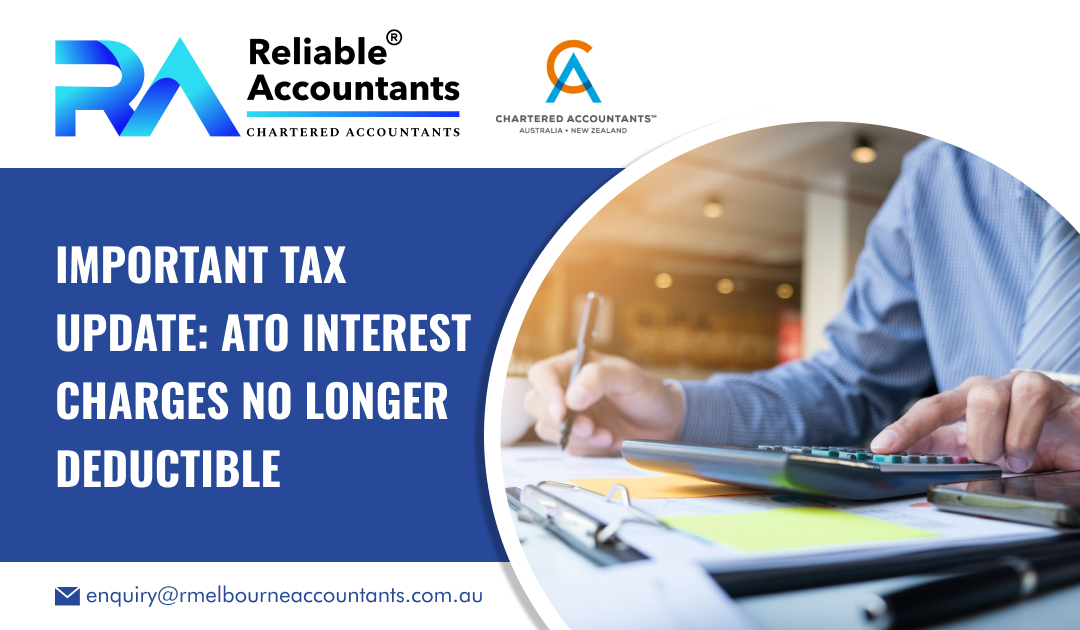Starting from 1 July 2025, carrying an ATO debt will become more expensive, as two types of interest charges imposed by the ATO will no longer be deductible.
What are the interest charges?
The ATO charges two types of interest:
- General Interest Charge (GIC): The GIC applies when tax payments are overdue. It is designed to encourage taxpayers to pay on time, ensuring that those who delay their payments do not gain an unfair advantage over those who pay on time. The GIC is calculated daily on the outstanding amount, with a rate of 10.78% for the July-September 2025 quarter.
- Shortfall Interest Charge (SIC): The SIC applies when there is a shortfall in the amount of tax paid due to a correction or amendment to your tax assessment. The SIC is also calculated daily on a compounding basis. For the July-September 2025 quarter, the SIC annual rate is 6.78%. The charge is applied to the shortfall amount for the period between the original due date and when the assessment correction is made.
What’s changing?
Previously, both SIC and GIC amounts were deductible, reducing the net after-tax cost of interest for taxpayers with a positive income tax liability in the relevant year.
However, new legislation passed by the Government stipulates that SIC and GIC amounts incurred on or after 1 July 2025 will no longer be deductible, even if the interest relates to a tax debt that accrued before this date. As these interest charges are no longer deductible, the after-tax impact will be greater for many taxpayers, with the effect becoming more pronounced as your tax rate increases.
What can you do to lessen the impact of this change?
The straightforward solution is to pay down your ATO debt as quickly as possible. Given that the GIC rate is relatively high and continues to accrue daily, settling the debt sooner will help minimise the overall cost.
The quicker you pay off your debt, the less interest will accumulate.
If you are unable to clear your ATO debt in the short term, consider exploring alternative options. For example, borrowing money from another source with a lower interest rate to pay off the ATO debt might be a great solution. In some cases, you may even be able to claim a deduction on the interest accrued from a loan used to settle tax debts, though this is typically only applicable if the debt originates from business activities. It’s generally not possible to claim a deduction for interest on loans used to pay tax debts related to investment or employment income.
While the ATO sometimes allows taxpayers to enter a payment plan to pay off tax debts in instalments, it’s important to note that tax debts under a payment plan still accrue General Interest Charges (GIC).
A more proactive approach is to plan ahead to ensure you can meet upcoming tax obligations on time. This might involve setting aside funds regularly for tax instalments, GST, PAYG withholding, and other ATO payments. Keeping these amounts separate can help ensure you are prepared when the ATO bill arrives.
If you are currently managing tax debt or need support staying on top of your obligations, we’re here to assist. Let’s develop a strategy together to keep you compliant and safeguard your financial health.

